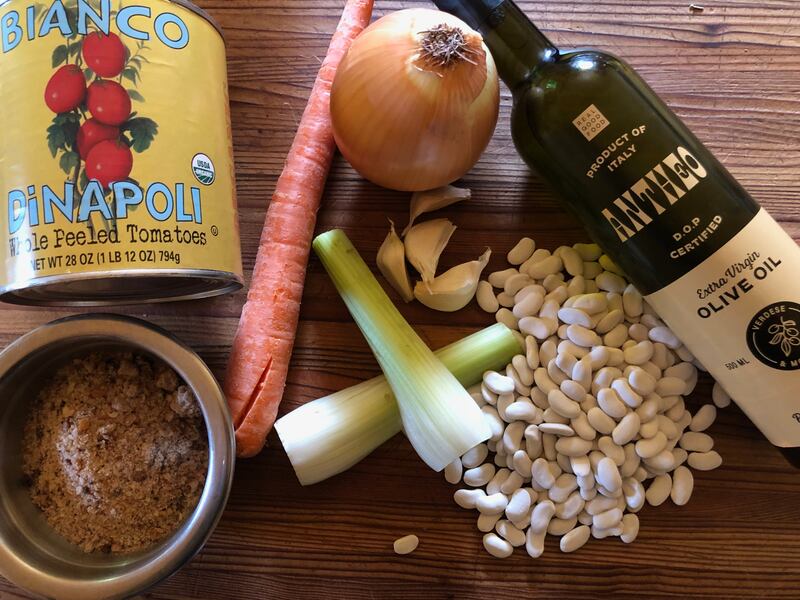Jim Dixon wrote about food for WW for more than 20 years, but these days most of his time is spent at his olive oil-focused specialty food business Wellspent Market. Jim’s always loved to eat, and he encourages his customers to cook by sending them recipes every week through his newsletter. We’re happy to have him back creating some special dishes just for WW readers.
The modern version of this famous slow-baked bean dish requires several days cooking and a variety of preserved meats. Its origin is claimed by three different towns in France, with lively arguments over what constitutes an “authentic” cassoulet. A slow bake creates a dark crust, and the name cassoulet is what they call the special pot, the casserole, which features a wide mouth to maximize the crustiness. It’s delicious, but I prefer an easier approach.
Cassoulet evolved from the kind of everyday food poor people made to survive winter. Dried beans from the summer harvest, vegetables from the root cellar, sometimes a bit of preserved meat, and a dried-out bread crust ground into crumbs become a hearty stew.
My fake cassoulet still takes some time and involves a couple of different pots, but you can start in the morning and eat it for dinner the same day. Most of the time, the pots are just sitting in a low oven, the contents getting dark and delicious, so it’s a great project for a cool day.
The medium-size, slightly flattened white beans from Tarbais, one of cassoulet’s birthplaces, are traditional, but any white bean works. Don’t be tempted to use canned beans since this dish depends on the flavor the broth gains by cooking dried beans. If you want to make this meaty, add a couple of sausages or chicken thighs.
I like the irregular nature of the breadcrumbs I make at home in the food processor. After a couple of days eating from a loaf, I cut the stale end into cubes, let them sit on the counter for a few days, then blitz them in the Cuisinart. No matter how long I process, the crumbs always seem to vary from powdery dust to little chunks of crust, but I prefer the variety. If you must, use panko.

Cassoulet Adjacent
1/2 pound white beans
1 onion, chopped
1 leek, halved and sliced
1 stalk celery, chopped
1 medium carrot, chopped
3 cloves garlic, chopped
1/4 cup extra virgin olive oil
1 cup canned crushed tomatoes (or canned whole tomatoes that you’ve crushed with your hands)
1 cup breadcrumbs, preferably homemade
Salt to taste
You’ll need a pot with a lid to cook the beans in the oven. Combine them with 4-5 cups of water, a spoonful of salt, and a few glugs of extra virgin olive oil (at least 2-3 tablespoons). Cook them in a 250 degree oven until they’re done, usually 3-4 hours, but times can vary. If you smell them cooking, check the pot and add more water so they’re covered.
In a heavy skillet that can go into the oven and is large enough to hold the beans when they’re done, combine the onion, leek, celery, carrot and garlic with the olive oil and a good pinch of salt. Put it in the oven while the beans are cooking, stirring every 30 minutes or so, and cook until darkly browned, about 90 minutes. Mix in the tomatoes and set aside until the beans are ready.
When the beans are tender and soft, add them to the skillet with the vegetables. If you want to add any meat, nestle it into the skillet now. Sprinkle the breadcrumbs in an even layer over the top. Turn the oven up to 300 degrees and cook the cassoulet for another 90 minutes or until the top is dark and crusty.

